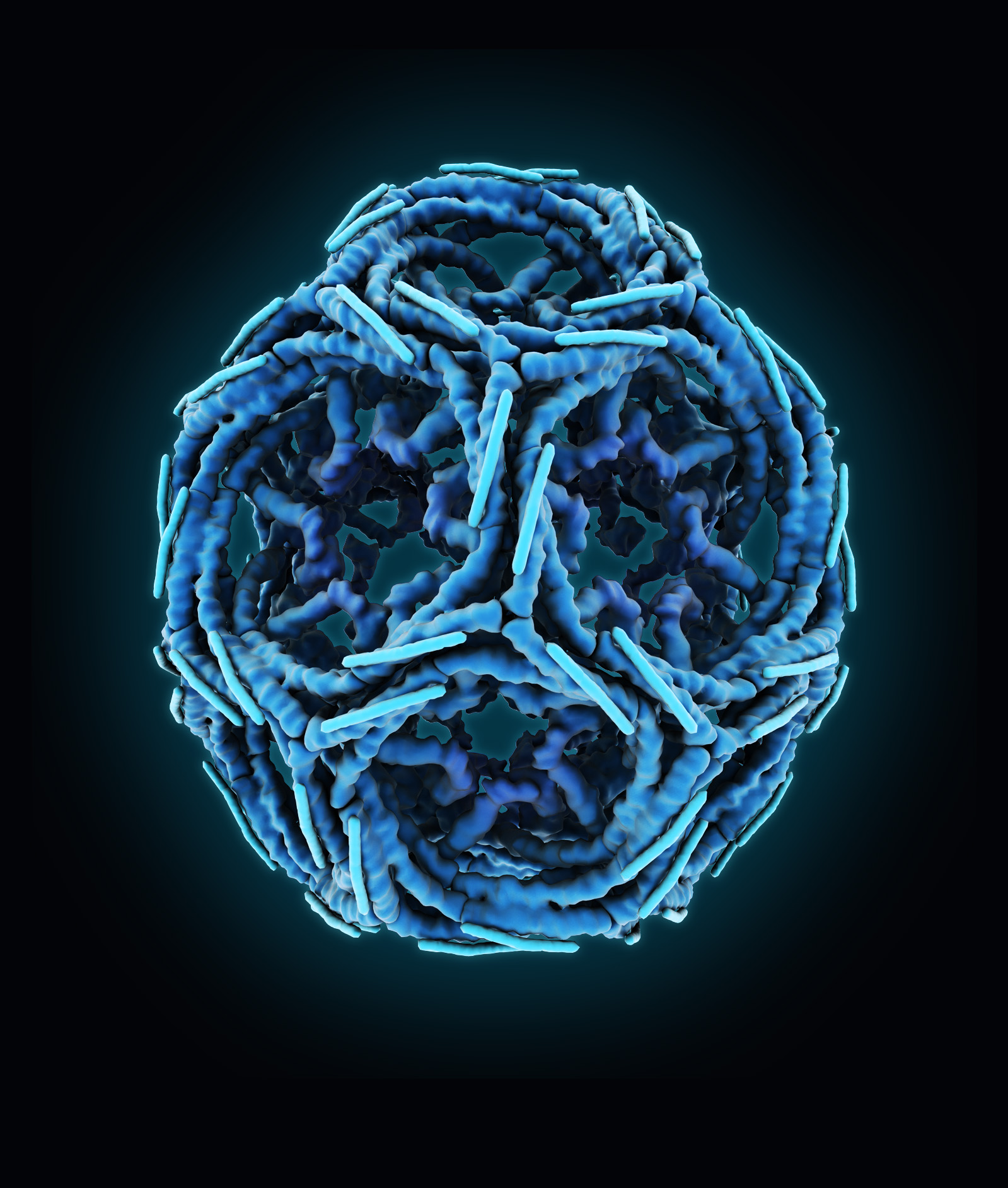
Outreach Coordinator
Career Profile
Please introduce yourself (what is your current training/educational status and/or where do you work?) and share with us how you decided to get into scientific visualization.
I work as an outreach coordinator at the RCSB Protein Data Bank at Rutgers University. My main duty is to handle the visual aspects of our educational outreach including graphic design, web design, illustration, and animation. I also coordinate outreach-related events, such as for example the Video Challenge for High school Students, or the Art of Science exhibit. My path to making scientific visualizations is quite untypical. After getting a Masters Degree in German Literature, I got an Associate Degree in Advertising Design. I’ve worked for a few years as a graphic designer in the private sector before starting at the RCSB, first doing some graphic design on hourly basis and since the last 5 years in my current position. I also have some experience teaching German. My current position combines my two passions: visual communication and education. Although they seem unrelated, I think they both deal with the same core challenge: how to present a complex topic/information to the audience in a simple, understandable way.
What do you like the most about this field?
I like that the field of molecular visualization is still establishing itself and anyone with a passion can enter it without a formal degree. The fact that the life sciences are in their Renaissance period is also a draw. The scientific milestones open endless opportunities for visual communication.
How and where did you acquire your current skillset in scientific visualization? Was it all via a graduate or other program or are you self taught? If so, did you use any particular online resources to help with your training?
When it comes to molecular visualization, I was inspired by the early molecular movies, especially by Drew Berry’s work. It became obvious to me that if I want to continue working in educational outreach, I have to learn how to create such animations. I took a beginner class in Autodesk Maya at a local community college where I learned the basics of modeling, shading, lighting, and rendering. Then I signed up for Lynda.com and learned some animation techniques and gained some video editing skills. The tutorials on molecularmovies.org were also extremely helpful. I tend to come back to them very often and I always appreciate the effort of all the people who created them and maintained the website.

What do you consider some of the biggest barriers to entering the field? Are they technical, training, scientific, professional (availability of jobs or projects)?
I believe that the greatest advantage of the field is also its pitfall. Because the field is not very established, there are not that many jobs focusing on just molecular visualization. In a lot of cases (including mine) you enter a related position and then carve out a space in it for molecular animation. Also, unless you work in a larger team, most jobs in the field require a wide range of skills. You are the animator, the video editor, the sound person, the writer, and the researcher. While it’s exciting to wear so many hats, it takes time to become proficient at every one of these skills.
Which practitioners (or what visualizations) have been most inspirational to you?
As I mentioned before, the greatest influence was Drew Berry. His work put the “life” into the “life sciences” for me. I also like the intricate cellular landscapes by David S. Goodsell, with whom I have the pleasure and honor to work. Outside of the molecular visualization field, I would also name Baroque painting, especially the work of Caravaggio and Pixar movies as inspirations.
Which conferences would you recommend to those interested in this field and why? What particular insights or benefits did you get out of attending this (these) conferences?
I have to recommend VIZBI, as it’s the only conference I’ve attended. The best part of the conference is that you get to meet great people and draw inspiration from their work. I would also strongly recommend attending the pre-VIZBI tutorials. These intense workshops are taught by top professionals in the field and focus on skills specific to science-visualization. Over the last 3 years, I’ve attended 3 different tutorials and I find the techniques that I learned during each of them extremely useful in my work.
If there was one resource, tool or conference that you could wish for to facilitate your work, what would it be?
A community forum, like StackOverflow for molecular animation professionals. There are a lot of know-how exchange boards for questions related to animation in general, but if you run into a problem that is specific to molecular animation, you can search the Internet high and low and you will not find much information.
What other advice would you offer those interested in either a professional or full-time academic career in scientific visualization?
I think the holy grail of the science communication is to speak in your own voice in the language of your audience. Be original, express yourself through your work, but at the same time keep in mind that you provide a service for people who want to learn from your videos, so make sure they can do it efficiently.

Please comment briefly on the samples/links that you have submitted for this profile… why in particular are you proud of these and what do you hope viewers will notice and get from seeing them?
Stills from the animation The Structural Biology of HIV Treatments – My first sample are stills from the animation The Structural Biology of HIV Treatments that I created with David Goodsell. The animations were created for a full feature documentary about multiple aspects of the HIV treatments from the perspectives of the patients, the health care professionals, and the scientists. Once completed, it will be an educational tool for medical students. I’m proud to be a part of this touching documentary, as it presents how the achievements of science help the HIV patients to reclaim their lives.
Clathrin cage based on the PDB entry 1xi4 – The second image is a rendering of Clathrin Cage based on the PDB entry 1xi4 that I created for our traveling exhibit The Art of Science. The image was honored with the 2016 Wellcome Image Award. It might not seem like a very complicated project for the Clarafi.com audience, however, in the setting of the exhibit a simple image like that has the potential to grab the viewer’s attention and steer curiosity. In a traditional learning setting an image generally complements some explanatory text, but in this case the image drives the learning process.
Where do you think the field of scientific visualization is ‘going’? Do you perceive any trends in its evolution or are there certain directions that you would like to see implemented?
The new technologies open up a multitude of ways to present the world of the molecular biology how it really is: three dimensional and dynamic. I hope that the science education will begin to include more animations, more educational games, and virtual reality environments allowing for exploration of the molecular systems. And hopefully the traditional way of teaching and learning science using textbooks will become redundant.
And then let’s end with a simple question… What is your ‘10 year plan’ in terms of what you hope to accomplish in scientific visualization?!
At some point I decided to stop making long-term plans. I find them constraining and exhausting. I believe it’s easier to go with the flow and just welcome new opportunities and challenges. I can only hope that I will continue to work in the field, develop my skills, and that my work will help people understand scientific concepts.
